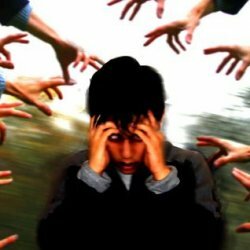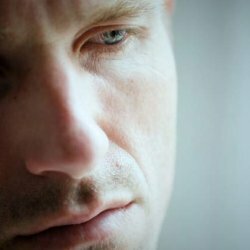Schizophreniform disorder
 This disorder is manifested by hallucinations, delusions and many other psychotic symptoms that can last at least 1 day, a maximum of 1 month, with a return to normal. Most often it develops in susceptible people due to hard-lived stress. This diagnosis is considered one of the most common, with the first treatment of patients in the reception and diagnostic departments. In a year of 4-6 cases per thousand population - so often this disorder occurs.
This disorder is manifested by hallucinations, delusions and many other psychotic symptoms that can last at least 1 day, a maximum of 1 month, with a return to normal. Most often it develops in susceptible people due to hard-lived stress. This diagnosis is considered one of the most common, with the first treatment of patients in the reception and diagnostic departments. In a year of 4-6 cases per thousand population - so often this disorder occurs.
The causes of schizophrenia disorder
Psychoses exist acute, reactive and protracted. Stress, severe bereavement, violence, imprisonment, overstrain, mental pain, and prolonged waiting and debilitating travel can be the main causes of the onset of acute or transient psychotic disorder. In this case, they also include acute and prolonged reactive psychoses. However, they can begin endogenously, with the help of internal experiences. In this case, this diagnosis will be prerequisites for mannequin manifestations of schizophrenia, and perhaps an attack of schizoaffective disorder. This diagnosis can be made on the condition that mental disorders of a person last no more than 3 months.
The main symptoms of schizophrenia disorder
The initial period with anxiety, anxiety, confusion and insomnia gradually reveals sensual and acute delirium, the structure of which is very variable. The continuation of acute psychosis ranges from one week to two. The patient presents himself at the center of all the events taking place, created by his mind. Ideas, meanings, stagings, persecutions, relationships, false recognitions, as well as delusions of the double( Capra) appear against the background of a symbolic or mythological perception of the surrounding world. The patient can often experience for the spiritualized plants, animals and even inanimate objects, and also in his mind may engage ideas of influence. Periodically there are hallucinatory disturbances, auditory pseudo-hallucinations and true, very unstable, and often they replace each other. Amnesia with this diagnosis is absent, but the patient is not able to immediately tell about the experience, he gradually remembers about it. The manifestations of the affect of fear, happiness, confusion, surprise and bewilderment are possible. There may be a feeling of "dreaminess" of all experiences.
Psychoses of this kind are often associated with a variety of stresses, so when conducting the diagnosis it is indicated that the psychosis was caused by stress or without his participation. Earlier transistor psychoses, which were associated with stress, were reactive. It is conventionally accepted that the stressor is the factor that arose before psychosis in less than two weeks. However, criteria of the clinical type of communication with the stressor are also important, as a rule, sounding refers to a sound in a stressful situation in a clinical picture, for example, persecution appears after actual persecution, and after the stressor is over, this sound gradually fades and the normal state is restored. The stressor can be many different situations, for example, the situation of divorce or separation, loss of social level or economic collapse, the observed catastrophe and even news of it.
Clinical example of schizophreniform disorder
The patient is a man, 42 years old, the owner of a fairly large firm. In times of economic crisis and a fairly sudden devaluation, it lost a significant part of its capital. As a result, he did not sleep, and worked three nights to somehow fix his financial situation, but such an attempt did not lead to anything. Then the man noticed that the tax police and creditors began to follow him. The man decided to cover up the tracks and hide from the pursuers, left Moscow and went to Kiev, threw his car in an unknown place to him, and moved on trains. However, the feeling of persecution did not leave him in the cars. I had to go out at small stations. Then he decided to get rid of the documents and burned a passport in the toilet. Then the man turned to his friend for help, asking him to help him escape. I began to notice the connection between the numbers of cars and the dates of my birth, in the end I decided that I had spotted a group of people who was watching him. It also seemed to the man that he hears how the pursuers plan against him, in conversations on mobile phones. As a result, I constantly felt anxiety, fear, confusion. The condition was localized due to two injections of holoperidol and aminazine.
Diagnosis of schizophreniform disorder
Acutely evolving delusions, hallucinations, torn and incoherent speech, the full picture develops to two weeks.
Differential diagnosis of
It is necessary to differentiate with schizoaffective disorders, schizophreniform disorders, the manifestation of schizophrenia and various psychotic disorders if there is dependence on psychoactive substances. To differentiate from schizoaffective disorders and schizophrenia, this psychosis can only be due to subsequent dynamic observations, since transistor psychotic disorder is only an episode. In patients with psychoactive substance dependence, as a rule, psychoses pass with a change of consciousness, in other words, a delirium clinic, hallucinations of the visual type usually prevail in such psychosis. In this case, psychosis occurs usually after the abolition of psychoactive substances, in the case of alcohol abuse, psychosis often manifests itself in the evening. It is possible to detect the necessary intoxicating medical information. Schizophreniform disorders of the organic type also include symptoms of an exogenous nature, such as amnestic, asthenic and quantitative disorders, additional methods of investigation are needed to refine organic substances. All the diagnostics of such a group looks like this: the first month - the diagnosis of a confident type is used, up to three months - the time of the controversial diagnosis, from three to six months - there is a need to revise the diagnosis. Usually a revision of the diagnosis occurs for organic disorders, schizophrenia and schizoaffective disorder.
Treatment of schizophreniform disorder
In the treatment of disorders of this type, detoxification therapy is used, mean doses of neuroleptics are used, although there are cases in which the maximum dose is used. Usually they combine such drugs: haloperidol with aminozyme, trifazin with haloperidol or use combinations of a tranquilizer with one of the antipsychotics. Because of the strong risk of re-occurrence of psychosis, the patient should take a certain time, about two to three weeks after discharge, to take the recommended doses of neuroleptics recommended by the doctor.



